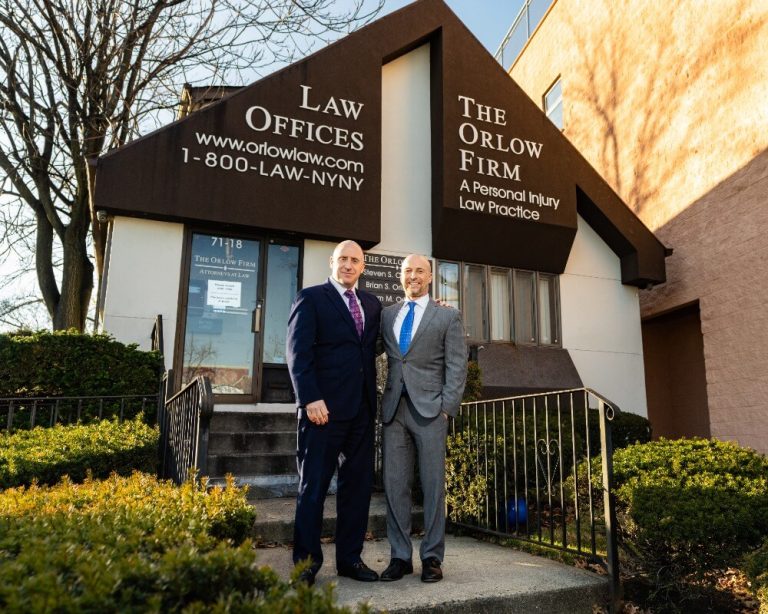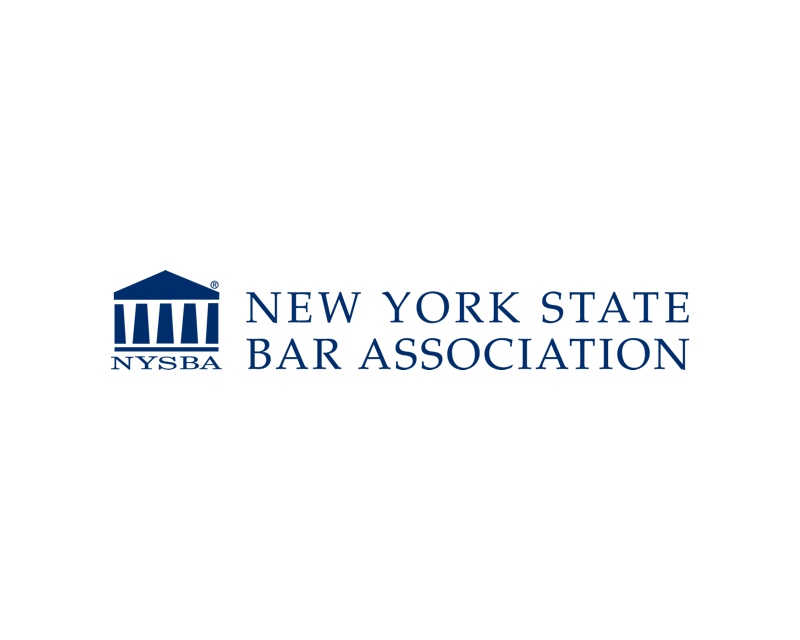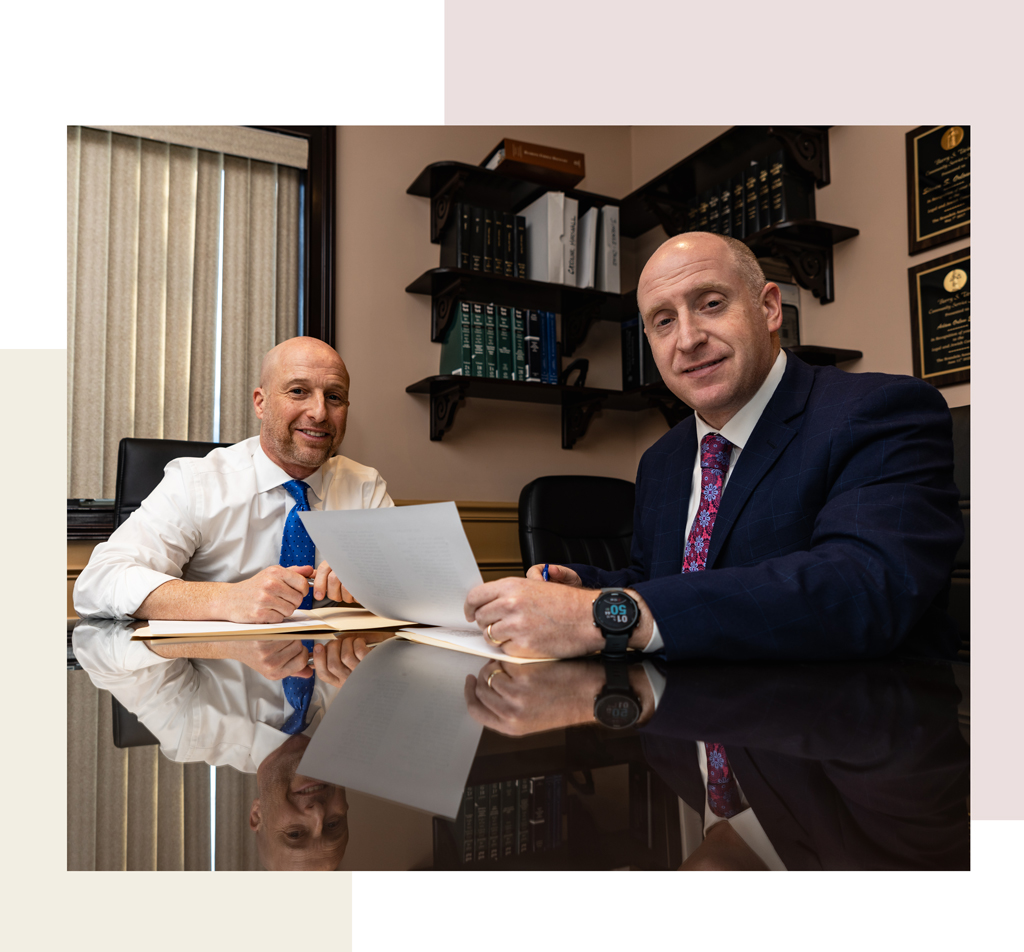What to Know If You Are Injured from Broken Steps in New York City
Quick Answer: If you are injured from broken steps in New York City, you may have the right to seek compensation if the property owner was negligent in maintaining safe conditions. It is important to report the injury, gather evidence, and consult a lawyer to understand your legal options. Time limits apply, so acting promptly is crucial.
Common Causes of Slip and Fall Accidents on Broken Steps
Slip and fall accidents on broken steps are common in New York City due to a variety of factors. Understanding these causes can help you recognize hazardous situations and protect your rights if you are injured.
Here are some of the most common causes of slip and fall accidents on broken steps:
- Cracked or Missing Step Material: Over time, concrete, wood, or stone steps can crack, chip, or erode. Missing pieces or uneven surfaces increase the risk of tripping or slipping.
- Loose or Wobbly Steps: Steps that are not securely attached or have weakened supports can shift underfoot, causing falls.
- Worn or Damaged Treads: The tread is the part of the step you step on. If it is worn smooth, broken, or slippery, it can cause you to lose your footing.
- Poor Lighting: Dimly lit stairways make it hard to see broken or uneven steps, increasing the chance of missteps.
- Lack of Handrails or Broken Handrails: Handrails provide balance and support. Missing or damaged handrails make it harder to steady yourself, especially on broken steps.
- Weather Conditions: In NYC, rain, snow, and ice can make steps slippery. When combined with broken or uneven steps, the risk of falling rises sharply.
- Debris or Obstacles: Objects left on or near steps, such as leaves, trash, or ice patches, can cause slips or trips.
- Neglected Maintenance: Property owners who fail to repair or inspect steps regularly may allow dangerous conditions to persist.
In New York City, older buildings and outdoor stairways are especially prone to these problems due to age and heavy foot traffic. Property owners have a legal duty to keep their steps safe and in good repair. When they fail to do so, it can lead to serious injuries.
If you have been injured from broken steps during a slip and fall accident, it is important to understand what caused the fall. Identifying the specific hazard can help establish liability and support your legal rights to compensation.
Your Legal Rights After a Slip and Fall Injury on Broken Steps
If you are injured from broken steps in New York City, you have important legal rights to protect your interests. A slip and fall accident caused by unsafe or damaged steps can lead to serious injuries. Knowing your rights helps you understand how to seek compensation for your losses.
- The right to compensation: If your injury happened because the broken steps were not properly maintained or repaired, you may have the right to seek money damages. These damages can cover medical bills, lost wages, pain and suffering, and other costs related to your injury.
- Premises liability laws protect you: Property owners and managers have a legal duty to keep steps safe for visitors. If they fail to fix broken steps or warn about hazards, they may be responsible for your injury. This is called premises liability. In New York City, these rules apply to landlords, businesses, and other property owners.
- Filing a claim: After a slip and fall on broken steps, you can file a claim against the responsible party. This involves notifying them or their insurance company about your injury and damages. It’s important to act quickly because New York law limits the time you have to make a claim, usually within three years from the accident date.
- Your right to medical care and documentation: Seeking prompt medical treatment is vital. It not only protects your health but also creates a record of your injury. Medical reports serve as important evidence if you pursue a legal claim.
- Potential defenses and challenges: The property owner may argue that you were partly or fully responsible for your fall, such as not paying attention or misusing the steps. New York follows a rule called comparative negligence, which means your compensation can be reduced if you share some fault.
- Right to legal advice: You have the right to consult a personal injury attorney to understand your case better. A lawyer can explain the legal steps, help gather evidence, and communicate with insurers on your behalf.
Understanding your legal rights after a slip and fall injury on broken steps is the first step in protecting yourself. If you or a loved one has been hurt in such an accident in New York City, it is important to act promptly and carefully to preserve your rights and options. For help or questions about your situation, you can call The Orlow Firm at (646) 647-3398.
Who Is Responsible for Broken Steps in NYC Slip and Fall Cases?
In New York City slip and fall cases involving broken steps, determining responsibility depends on several factors. Generally, the owner or party in control of the property where the broken steps are located may be held liable if their negligence caused your injury.
- Property Owners and Landlords
Property owners, including landlords, are usually responsible for maintaining safe conditions on their premises. This includes making sure steps, stairs, and walkways are in good repair. If they knew or should have known about the broken steps but did not fix them in a reasonable time, they might be liable for injuries caused by those steps. - Building Managers and Maintenance Companies
Sometimes, property owners hire building managers or maintenance companies to take care of repairs and safety. These parties may share responsibility if they failed to inspect, repair, or warn about the broken steps. Liability depends on their role and whether they acted with reasonable care. - City or Government Entities
In some cases, broken steps may be part of public property, such as stairs on city sidewalks or in public housing. When this happens, a city agency or government entity might be responsible. However, claims against government bodies often have strict rules and deadlines, so it is important to act quickly. - Other Possible Responsible Parties
- Contractors or Repair Companies: If a contractor performed faulty repairs that led to the broken steps, they could be responsible.
- Business Owners: If the broken steps are at a business entrance, the business owner must keep the area safe for customers.
If you were injured by broken steps in New York City, it is important to identify the right party responsible for your injury. This helps protect your rights and allows you to seek compensation for your damages. For help understanding your situation, you can contact The Orlow Firm at (646) 647-3398 to discuss who may be responsible in your case.
How to Document Your Injury and the Broken Steps Condition
If you are injured from broken steps in New York City, properly documenting your injury and the condition of the steps is very important. Careful documentation helps protect your legal rights and supports your slip and fall case.
Here are some key steps to document your injury and the broken steps condition:
- Take Photos and Videos Immediately: Use your phone or a camera to take clear pictures and videos of the broken steps where the accident happened. Capture any cracks, loose boards, missing pieces, uneven surfaces, or other visible damage. Also, photograph the area around the steps, including lighting and handrails if applicable.
- Document Your Injuries: Take pictures of any visible injuries you have, such as bruises, cuts, swelling, or scrapes. These images can be useful to show the impact of the fall.
- Write Down Details About the Accident: As soon as possible, write a detailed account of how the fall happened. Include the exact location, time, weather conditions, and what caused you to fall. Note if there were any warning signs or if the property owner had been notified about the broken steps before.
- Get Medical Records: Seek medical attention promptly. Your doctor’s reports and treatment records are important proof that your injuries resulted from the fall on the broken steps. Keep copies of all medical bills, test results, and prescriptions.
- Collect Witness Information: If anyone saw your fall or the broken steps condition, ask for their names and contact information. Witnesses can support your account of the accident and the dangerous condition.
- Preserve Evidence: Avoid making any repairs or changes to the broken steps until your case is resolved. Preserving the condition helps establish liability.
- Report the Incident: Notify the property owner or manager about the broken steps and your injury in writing. Keep a copy of your report or any responses you receive. This can show that the owner was aware of the hazard.
In New York City, documenting the broken steps and your injury carefully can make a difference in proving your claim. If you need assistance understanding how to gather and preserve evidence, The Orlow Firm can provide guidance. Call us at (646) 647-3398 to discuss your situation.
The Importance of Timely Reporting and Medical Care
If you are injured from broken steps in New York City, it is very important to report the accident as soon as possible. Timely reporting helps create an official record of the incident. This record can be used later when you file a slip and fall claim. If you wait too long to report, it may be harder to prove what happened or that the broken steps caused your injury.
In many cases, you should notify the property owner, building manager, or landlord immediately after the fall. For example, if you fall on broken steps outside an apartment building, tell the building superintendent or management right away. Ask them to make a written note of your report. If possible, get a copy of that report for your records.
Seeking prompt medical care is equally important. Even if your injuries seem minor, some problems may not show symptoms right away. A doctor can properly diagnose your condition and begin treatment early. Medical records created soon after the accident are also key evidence for your claim. They help show the link between the broken steps and your injuries.
Here are some reasons why timely reporting and medical care are critical in a slip and fall case involving broken steps:
- Establishes a clear timeline. Reporting the accident quickly helps prove when and where it happened, which supports your case.
- Preserves evidence. Early notice may encourage property owners to fix the broken steps or keep records of the repair delay, which can be useful evidence.
- Protects your health. Immediate medical attention can prevent complications and help document your injuries accurately.
- Supports insurance claims. Insurance companies often require prompt notification of accidents to process claims properly.
In New York City, some property owners have a legal duty to keep steps safe and in good repair. Reporting the hazard quickly can show they knew or should have known about the dangerous condition. This can strengthen your claim for compensation.
If you delay medical treatment or reporting the accident, insurance companies or opposing parties might argue that your injuries were caused by something else. This can weaken your case and reduce your chance for fair compensation.
Remember to keep copies of all medical records, bills, and any written reports of the broken steps. If you take photos of the broken steps and your injuries right after the fall, save those too.
If you have questions about your rights after a slip and fall on broken steps in NYC, or need help with reporting and medical care, you can contact The Orlow Firm at (646) 647-3398. Prompt action is key to protecting your health and legal rights.
Time Limits to File a Broken Steps Slip and Fall Lawsuit in New York
If you were hurt in a slip and fall accident caused by broken steps, it’s important to understand that you only have a limited amount of time to take legal action. These legal deadlines are called “statutes of limitations,” and missing them could mean you lose your right to seek compensation.
In most New York slip and fall cases—including those involving broken or damaged steps—the statute of limitations is three years from the date of the accident. This means you generally have three years to file a personal injury lawsuit against the property owner or responsible party according to New York Civil Practice Law and Rules (CPLR) § 214(5).
However, if your fall happened on government-owned property—such as at a public housing building, school, or subway station—you must act even faster. In these cases, you usually have to file a Notice of Claim within 90 days of the accident under General Municipal Law § 50-e.
There may also be different rules if the injured person is a minor or under a legal disability. These exceptions are covered in CPLR § 208, which allows some tolling (pausing) of the statute of limitations under limited circumstances.
Understanding these deadlines is key to protecting your rights. Even if three years sounds like a long time, it’s usually best to start your case sooner rather than later. Evidence can disappear, and memories can fade. The sooner you speak to a lawyer, the better chance you have of building a strong case.
If you or a loved one was injured due to broken steps, contact The Orlow Firm today to schedule a free consultation. We can help you understand your rights and meet all important deadlines.
Understanding New York City Premises Liability Laws for Broken Steps
In New York City, premises liability laws set the rules about when a property owner or manager is responsible for injuries caused by dangerous conditions. When it comes to broken steps, these laws are important for understanding your rights after a slip and fall accident.
Premises liability means that property owners must keep their property reasonably safe. This includes common areas like stairs, sidewalks, and entryways. If steps are broken, cracked, or otherwise unsafe, the owner may be responsible for injuries caused by those defects.
Here are some key points about New York City premises liability laws related to broken steps:
- Duty to maintain safe conditions: Property owners, landlords, or managers must regularly inspect and repair broken steps to prevent accidents.
- Notice of the hazard: To be held responsible, the owner must have known about the broken steps or should have known through reasonable inspections. For example, if a step has been damaged for a long time without repair, this may show they had notice.
- Types of property involved: Liability can apply to private homes, apartment buildings, businesses, and public places. In New York City, landlords have specific responsibilities to keep common areas like staircases in safe condition.
- Comparative negligence: New York follows a comparative negligence rule, which means if you were partly at fault for your fall, your compensation might be reduced. For example, if you were distracted or not paying attention, your recovery could be affected.
- Statute of limitations: You must file a claim within a certain time frame, usually three years from the date of the accident in New York State. Missing this deadline may prevent you from recovering damages.
For example, if you slipped on a broken step in an apartment building lobby, the landlord might be responsible if they knew or should have known about the damage and failed to fix it. However, if you were running or ignoring warning signs, your claim could be weaker or reduced.
Understanding these laws helps you protect your rights after being injured on broken steps. It is important to act quickly, document the hazard, and seek medical care. If you believe the property owner was negligent, you may have the right to seek compensation for your injuries and related losses.
How Comparative Negligence Can Affect Your Slip and Fall Claim
In New York City slip and fall cases involving broken steps, comparative negligence plays a key role in determining how much compensation you may receive. Comparative negligence means that if you were partly at fault for your accident, your financial recovery could be reduced based on your share of the blame.
New York follows a pure comparative negligence rule. This means that even if you are mostly responsible for your fall, you can still recover some damages. However, your compensation will be lowered by the percentage of fault assigned to you.
Here’s how comparative negligence can affect your slip and fall claim involving broken steps:
- Fault is divided: The court or insurance company will look at the facts to decide how much you and the property owner each contributed to the accident.
- Your compensation is reduced: If you are found 30% at fault, and the total damages are $10,000, you would receive $7,000 after the reduction.
- You can still recover anything, even if mostly at fault: Unlike some states, New York allows you to recover damages no matter your percentage of fault, but the amount will reflect your share.
For example, if you tripped on a broken step but were not paying attention or were rushing, you might be partly responsible. The property owner might be responsible for not fixing the steps or warning you about the hazard. The law will weigh both sides.
Why does this matter? Understanding comparative negligence can help you see why it’s important to gather evidence that shows the property owner’s negligence. This might include photos of the broken steps, maintenance records, or witness statements. The stronger your evidence, the better your chance of proving the other party’s fault and reducing your own percentage of blame.
Also, being honest about your own actions after the accident can affect how fault is assigned. For example, if you were wearing proper footwear and walking carefully, it might reduce your share of fault.
In slip and fall cases on broken steps, the property owner has a duty to keep the steps safe or warn visitors of dangers. If they fail in this duty and cause your injury, they may be held responsible even if you share some blame.
If you have questions about how comparative negligence could affect your slip and fall case in New York City, calling The Orlow Firm at (646) 647-3398 can help you understand your rights and options.
Steps to Take When Filing a Slip and Fall Case in New York City
If you have been injured from broken steps in New York City, taking the right steps to file a slip and fall case is important to protect your rights. Here is a clear guide to help you through the process:
- Seek Medical Attention Immediately. Your health is the top priority. Even if your injuries seem minor, get a medical check-up as soon as possible. Some injuries may not show symptoms right away but could worsen over time. Medical records will also be important evidence for your case.
- Report the Incident Right Away. Notify the property owner, building manager, or landlord about the broken steps and your injury. In New York City, prompt reporting creates an official record of the hazard and accident, which can support your claim.
- Document the Scene and Your Injuries. Take photos or videos of the broken steps where you fell, showing the damage clearly. Also, photograph your injuries and keep copies of all medical reports, bills, and treatment records. If there were any witnesses, get their names and contact information.
- Preserve Evidence. Keep any items that may relate to the accident, such as torn clothing or shoes. If possible, avoid making repairs to the broken steps until the case is resolved, as fixing the hazard too soon can remove important evidence.
- Contact Your Insurance Company. Inform your health or renters insurance provider (if applicable) about your injury. They may cover medical bills or other costs while your claim is pending.
- Understand the Time Limits. New York has a statute of limitations, meaning you must file your lawsuit within a certain time frame—usually three years from the date of the accident. Acting quickly helps preserve your rights and evidence.
- Consult with a Personal Injury Attorney. An attorney familiar with New York City slip and fall cases can explain your legal rights and help you gather evidence. They can also guide you through negotiations with insurance companies or court procedures if needed.
- File a Claim or Lawsuit if Necessary. Your attorney can assist in filing a formal claim against the responsible party. If negotiations fail, they may help you file a lawsuit to seek compensation for medical bills, lost wages, pain and suffering, and other damages.
Remember, every slip and fall case is unique, especially in a busy city like New York. Taking these steps carefully can improve your chances of a fair outcome. If you have questions about your situation, you can call The Orlow Firm at (646) 647-3398 to discuss your case.
What Evidence Helps Prove Your Slip and Fall Injury on Broken Steps
To prove your slip and fall injury caused by broken steps in New York City, gathering strong evidence is essential. This evidence helps show what happened, how the broken steps caused your fall, and the extent of your injuries. The more clear and detailed your proof, the better your chances of supporting your claim.
Here are key types of evidence that can help prove your slip and fall injury on broken steps:
- Photographs and Videos: Take clear pictures or videos of the broken steps where you fell. Show any cracks, loose parts, missing pieces, or uneven surfaces. Also, capture the surrounding area to provide context. If possible, photograph your injuries soon after the fall.
- Medical Records: Keep all medical documents related to your injury. This includes hospital reports, doctor’s notes, x-rays, and treatment plans. Medical records show the seriousness of your injury and link it to the fall.
- Accident Reports: If the fall happened on public property or in a building with management, an official accident report may have been filed. Request a copy. This report can confirm the incident and record witness statements.
- Witness Statements: Collect contact information and written or recorded statements from anyone who saw you fall or noticed the broken steps. Witnesses can support your version of events and describe the dangerous condition.
- Maintenance and Repair Records: If possible, obtain records showing when the steps were last inspected or repaired. These documents can prove that the property owner knew or should have known about the broken steps and did not fix them.
- Personal Notes: Write down everything you remember about the fall as soon as possible. Include the date, time, location, weather, lighting, and how the broken steps caused you to slip or trip. Your notes can help refresh your memory later.
- Surveillance Footage: If the accident happened in a place with security cameras, try to get the video footage. This can show exactly how the fall happened and confirm the condition of the steps.
- Expert Inspections: In some cases, a professional such as a building inspector or engineer may examine the broken steps to explain how the condition contributed to your fall and injury.
Collecting this evidence quickly is important. In New York City, conditions can change, and broken steps might be repaired or altered. The sooner you document the scene and your injuries, the stronger your case will be.
If you are unsure how to gather or preserve evidence after your slip and fall on broken steps, consider contacting The Orlow Firm at (646) 647-3398. We can guide you on what information to collect and how to protect your rights.
Possible Compensation You May Be Entitled to After a Broken Steps Injury
If you are injured due to broken steps in New York City, you may be entitled to compensation for various losses caused by the accident. Compensation is meant to help cover the costs and hardships that arise from your injury. Understanding what types of damages you can claim is important when considering a slip and fall case.
Here are some common types of compensation you might be entitled to after a broken steps injury:
- Medical Expenses: This includes the cost of hospital stays, doctor visits, surgeries, physical therapy, medications, and any medical equipment you may need because of your injury.
- Lost Wages: If your injury prevents you from working, you may be compensated for the income you lose during your recovery period. This can also include loss of future earning ability if your injury affects your long-term work capacity.
- Pain and Suffering: This refers to compensation for the physical pain and emotional distress caused by the injury. It covers the impact on your quality of life, including discomfort, anxiety, and other emotional effects.
- Loss of Enjoyment of Life: If your injury limits your ability to participate in hobbies, social activities, or other aspects of daily life, you may be entitled to damages for this loss.
- Permanent Disability or Disfigurement: If your injury causes lasting damage, such as a permanent scar, limited mobility, or chronic pain, you may seek compensation for these permanent effects.
- Property Damage: In some cases, if your belongings were damaged during the fall, you might be able to recover the cost of repair or replacement.
In New York City, the amount of compensation you receive can depend on several factors, including:
- The severity of your injury: More serious injuries usually qualify for higher compensation.
- Proof of negligence: You must show that the property owner or responsible party failed to maintain the steps properly.
- Your own role in the accident: New York follows a comparative negligence rule, which means your compensation may be reduced if you are partly at fault for the fall.
It is important to keep detailed records of all medical treatments, lost work time, and any other expenses related to the injury. This documentation will support your claim and help establish the full extent of your damages.
If you have been injured on broken steps in New York City, knowing your rights to possible compensation can help you recover the costs and losses caused by the accident. For questions or assistance with your slip and fall case, contact The Orlow Firm at (646) 647-3398.
Contacting The Orlow Firm for Help With Your Slip and Fall Case

If you have been injured from broken steps in New York City, contacting The Orlow Firm can be an important step in understanding and protecting your legal rights. Slip and fall cases can be complex, especially when it comes to proving who is responsible and what compensation you may be entitled to. Speaking with a knowledgeable team can help clarify these issues and guide you through the process.
When you reach out to The Orlow Firm, you can expect:
- A clear explanation of your rights. We will help you understand how New York City premises liability laws apply to your case involving broken steps.
- Guidance on gathering evidence. You will learn what documentation and proof are important, such as photos of the broken steps, medical records, and witness statements.
- Advice on deadlines and reporting. Timely reporting of your injury and prompt medical care are critical to protect your claim. We will explain these time limits so you don’t miss important steps.
- Support in communicating with insurance companies. Insurance adjusters may contact you after your injury. We can help you understand what to say and what to avoid to protect your interests.
- Explanation of possible compensation. You will learn about the types of damages you may recover, such as medical expenses, lost wages, and pain and suffering.
- Assistance with filing your claim. We can help you prepare and submit the necessary papers to pursue your slip and fall case in New York City.
Slip and fall injuries from broken steps often require careful legal attention to ensure your rights are protected. If you are unsure about the next steps or have questions about your situation, contacting The Orlow Firm is a way to get personalized help and clear information.
To discuss your case or ask questions, please call The Orlow Firm at (646) 647-3398. We are ready to listen and provide you with guidance tailored to your injury and circumstances.









